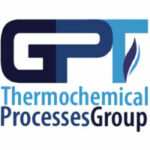SOBRE MÍ
Research Interests
Since I accomplished a Master’s degree in Chemical Engineering in March 2017, I oriented my trajectory to research, especially within the field of renewable energies and resource sustainability. A part of my final master project was carried out in a 5 months experience at Cranfield University (UK), where it was possible to enhance my knowledge about the Carbon Capture and Storage (CCS), with a particular focus on Calcium Looping applications. Later on, I spent 6 months working in Procter & Gamble company (R&D center, Brussels), working as visiting researcher on the process optimization addressed to polymer films production.
I am currently working at University of Zaragoza as a Marie Curie Early Stage Researcher in the GreenCarbon project, which is funded by the European Union in the framework of H2020 Marie Skłodowska Curie Actions – Innovative Training Networks (please visit http://greencarbon-etn.eu/ for more details). The main object of my PhD thesis is to give adding value to biomass residues by converting them through slow pyrolysis in carbon-based materials with the best properties for different applications, such as soil amendment and adsorption, among them. In light of that, my project aims to optimize the pyrolysis process in terms of operating conditions.
Proyectos
- GreenCarbon —Advanced carbon materials from biowaste: sustainable pathways to drive innovative green technologies (H2020-MSCA-ITN-2016-721991)
PUBLICATIONS
2022
Greco, Gianluca; Canevesi, Rafael L. S.; Stasi, Christian Di; Celzard, Alain; Fierro, Vanessa; Manyà, Joan Josep
Biomass-derived carbons physically activated in one or two steps for CH4/CO2 separation Artículo de revista
En: Renewable Energy, vol. 191, pp. 122–133, 2022, ISSN: 0960-1481.
@article{Greco2022,
title = {Biomass-derived carbons physically activated in one or two steps for CH4/CO2 separation},
author = {Gianluca Greco and Rafael L. S. Canevesi and Christian Di Stasi and Alain Celzard and Vanessa Fierro and Joan Josep Manyà},
url = {https://linkinghub.elsevier.com/retrieve/pii/S0960148122004967},
doi = {10.1016/J.RENENE.2022.04.035},
issn = {0960-1481},
year = {2022},
date = {2022-05-01},
urldate = {2022-05-01},
journal = {Renewable Energy},
volume = {191},
pages = {122--133},
publisher = {Pergamon},
keywords = {},
pubstate = {published},
tppubtype = {article}
}
2021
Greco, Gianluca; Videgain, María; Stasi, Christian Di; Pires, Elisabet; Manyà, Joan Josep
Importance of pyrolysis temperature and pressure in the concentration of polycyclic aromatic hydrocarbons in wood waste-derived biochars Artículo de revista
En: Journal of Analytical and Applied Pyrolysis, vol. 159, pp. 105337, 2021, ISSN: 0165-2370.
@article{Greco2021,
title = {Importance of pyrolysis temperature and pressure in the concentration of polycyclic aromatic hydrocarbons in wood waste-derived biochars},
author = {Gianluca Greco and María Videgain and Christian Di Stasi and Elisabet Pires and Joan Josep Manyà},
doi = {10.1016/J.JAAP.2021.105337},
issn = {0165-2370},
year = {2021},
date = {2021-10-01},
journal = {Journal of Analytical and Applied Pyrolysis},
volume = {159},
pages = {105337},
publisher = {Elsevier},
keywords = {},
pubstate = {published},
tppubtype = {article}
}
Stasi, Christian Di; Renda, Simona; Greco, Gianluca; González, Belén; Palma, Vincenzo; Manyà, Joan Josep
Wheat-Straw-Derived Activated Biochar as a Renewable Support of Ni-CeO2 Catalysts for CO2 Methanation Artículo de revista
En: Sustainability 2021, Vol. 13, Page 8939, vol. 13, no 16, pp. 8939, 2021.
@article{Stasi2021,
title = {Wheat-Straw-Derived Activated Biochar as a Renewable Support of Ni-CeO2 Catalysts for CO2 Methanation},
author = {Christian Di Stasi and Simona Renda and Gianluca Greco and Belén González and Vincenzo Palma and Joan Josep Manyà},
url = {https://www.mdpi.com/2071-1050/13/16/8939/htm https://www.mdpi.com/2071-1050/13/16/8939},
doi = {10.3390/SU13168939},
year = {2021},
date = {2021-08-01},
journal = {Sustainability 2021, Vol. 13, Page 8939},
volume = {13},
number = {16},
pages = {8939},
publisher = {Multidisciplinary Digital Publishing Institute},
abstract = {Ceria- and urea-doped activated biochars were used as support for Ni-based catalysts for CO2 methanation purposes. Different materials were prepared and tested to find the best catalytic formulation. After several CO2 methanation experiments—carried out at 0.35–1.0 MPa and 300–500 °C—it was found that the most suitable catalyst was a wheat-straw-derived activated biochar loaded with 30 wt.% of CeO2 and 20 wt.% of Ni. Using this catalyst, a CO2 conversion of 65% with a CH4 selectivity of 95% was reached at 1.0 MPa, 400 °C, and 13,200 h−1. From the study of the influence of the gas hourly space velocity, it was deduced that the most likely reaction mechanism was a reverse water–gas shift reaction, followed by CO hydrogenation. N-doping of the carbon support as an alternative to the use of ceria was also investigated. However, both CO2 conversion and selectivity toward CH4 values were clearly lower than those obtained for the ceria-containing catalyst cited above. The outcomes of this work indicate that a renewable biomass-derived support can be effectively employed in the catalytic conversion of CO2 to methane.},
keywords = {},
pubstate = {published},
tppubtype = {article}
}
Stasi, Christian Di; Cortese, Marta; Greco, Gianluca; Renda, Simona; González, Belén; Palma, Vincenzo; Manyà, Joan Josep
Optimization of the operating conditions for steam reforming of slow pyrolysis oil over an activated biochar-supported Ni–Co catalyst Artículo de revista
En: International Journal of Hydrogen Energy, 2021, ISSN: 03603199.
@article{DiStasi2021,
title = {Optimization of the operating conditions for steam reforming of slow pyrolysis oil over an activated biochar-supported Ni–Co catalyst},
author = {Christian Di Stasi and Marta Cortese and Gianluca Greco and Simona Renda and Belén González and Vincenzo Palma and Joan Josep Manyà},
url = {https://linkinghub.elsevier.com/retrieve/pii/S0360319921020450},
doi = {10.1016/j.ijhydene.2021.05.193},
issn = {03603199},
year = {2021},
date = {2021-06-01},
journal = {International Journal of Hydrogen Energy},
publisher = {Pergamon},
keywords = {},
pubstate = {published},
tppubtype = {article}
}
2020
Greco, Gianluca; Stasi, Christian Di; Rego, Filipe; González, Belén; Manyà, Joan Josep
Effects of slow-pyrolysis conditions on the products yields and properties and on exergy efficiency: A comprehensive assessment for wheat straw Artículo de revista
En: Applied Energy, vol. 279, pp. 115842, 2020, ISSN: 03062619.
@article{Greco2020,
title = {Effects of slow-pyrolysis conditions on the products yields and properties and on exergy efficiency: A comprehensive assessment for wheat straw},
author = {Gianluca Greco and Christian Di Stasi and Filipe Rego and Belén González and Joan Josep Manyà},
doi = {10.1016/j.apenergy.2020.115842},
issn = {03062619},
year = {2020},
date = {2020-12-01},
journal = {Applied Energy},
volume = {279},
pages = {115842},
publisher = {Elsevier Ltd},
abstract = {In the present work, the effects of the peak temperature (400–550 °C), absolute pressure (0.2–0.9 MPa), gas residence time (100–200 s) and reactor atmosphere (pure N2 or a mixture of CO2/N2) on the pyrolysis behavior of wheat straw pellets were investigated. A factorial design of experiments was adopted to assess the effects of the above-mentioned factors on the pyrolysis products, the exergy efficiencies related to them and to the overall process, and the heat required. The pyrolysis energy/exergy assessment is nowadays of great interest, for the scaling of the installations from lab-scale to commercial-scale. Results showed that, as expected, the peak temperature was the most influential factor on the yields and distributions of all the pyrolysis products as well as the char properties related to its potential stability and pore size distribution. However, an increased pressure enhanced the release of the gas species at the expense of the liquid products, without altering the final char yield. The char exergy efficiency was negatively affected by an increase in peak temperature, whereas its effect on the exergy efficiency of the produced gas resulted to be positive. It was also found that pressurized pyrolysis favored the exergy efficiency of the process, even at relatively high pyrolysis peak temperature. For the biomass feedstock and the range of operating conditions studied here, thermodynamic irreversibilities of the pyrolysis system were considerably lowered when the process was conducted at 550 °C, 0.9 MPa and using a mixture of CO2 and N2 as carrier gas at relatively short residence times.},
keywords = {},
pubstate = {published},
tppubtype = {article}
}

